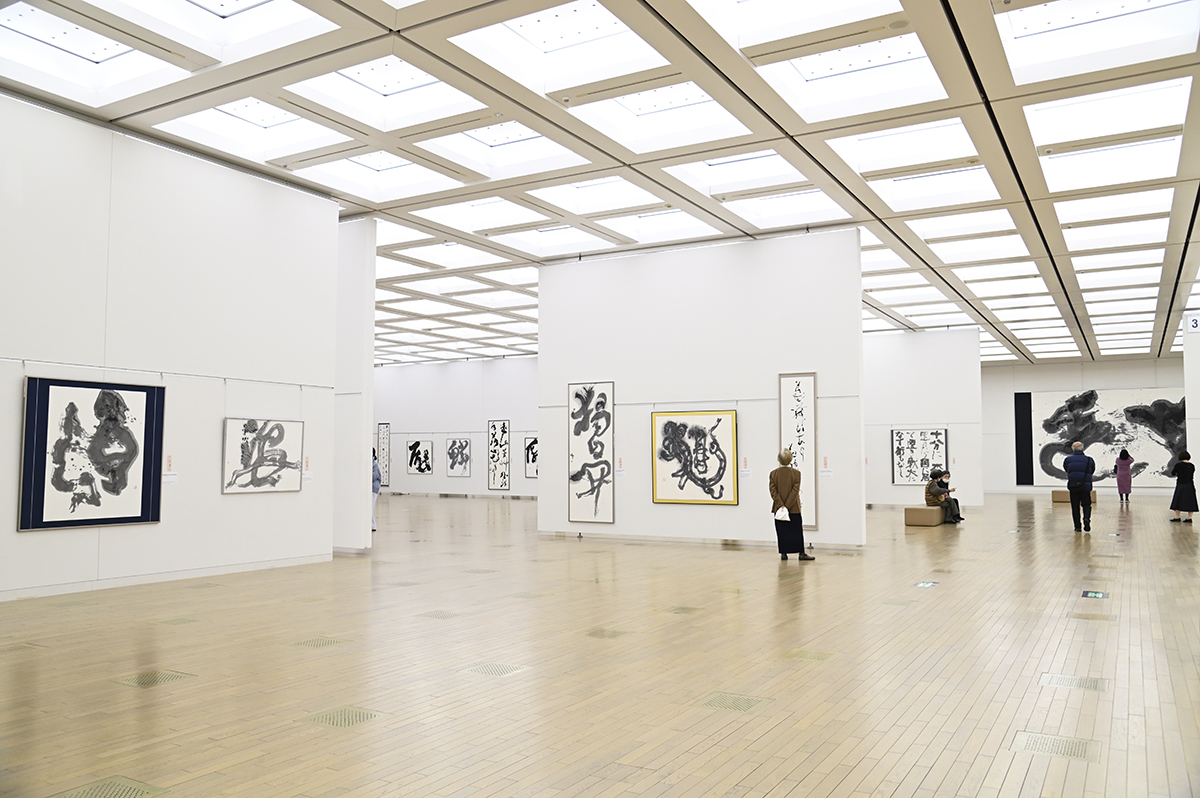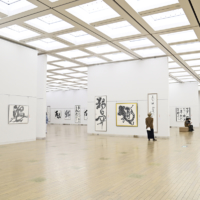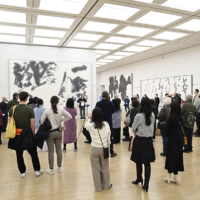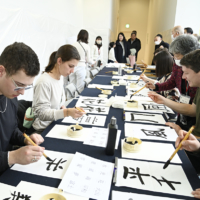Non-Japanese and Japanese alike had the opportunity to view and create their own works of sho (Japanese calligraphy) at the 72nd Dokuritsu Sho Exhibition held from Jan. 11 to 21 at the National Art Center, Tokyo.
Organized by the Dokuritsu Shojindan Foundation, the exhibition saw 21,457 visitors, including 3,746 from overseas, take in the 1,869 works created by the foundation’s members.
Established in 1952 as an association of independent calligraphers, the foundation seeks to nurture a sensibility among members that they are art creators. According to the foundation, the members’ works are characterized by a rich contemporary sense, intent in form design, and passion.
To explain some of the calligraphic techniques used in the works, two gallery talks with English interpretation were given on the exhibition’s final day. These talks also gave the presenters the opportunity to give their own impressions and interpretations of some of the pieces.
Focusing on some of the larger pieces that approached the size of table tennis tables, Dokuritsu Shojindan Director Osamu Matsuo used the first talk to emphasize how the mindset of the calligrapher is conveyed through brush strokes, choice of calligraphic style, and the shadings of the ink.
One large piece that Matsuo highlighted replicated part of a document written by the legendary ninth century Buddhist monk Kukai. This item prompted a question about what kind of brush someone might use to execute it, and how much time it might take. The calligrapher herself stepped forward to explain that it took her around an hour using a brush with a tip about the size of her wrist to complete the work.
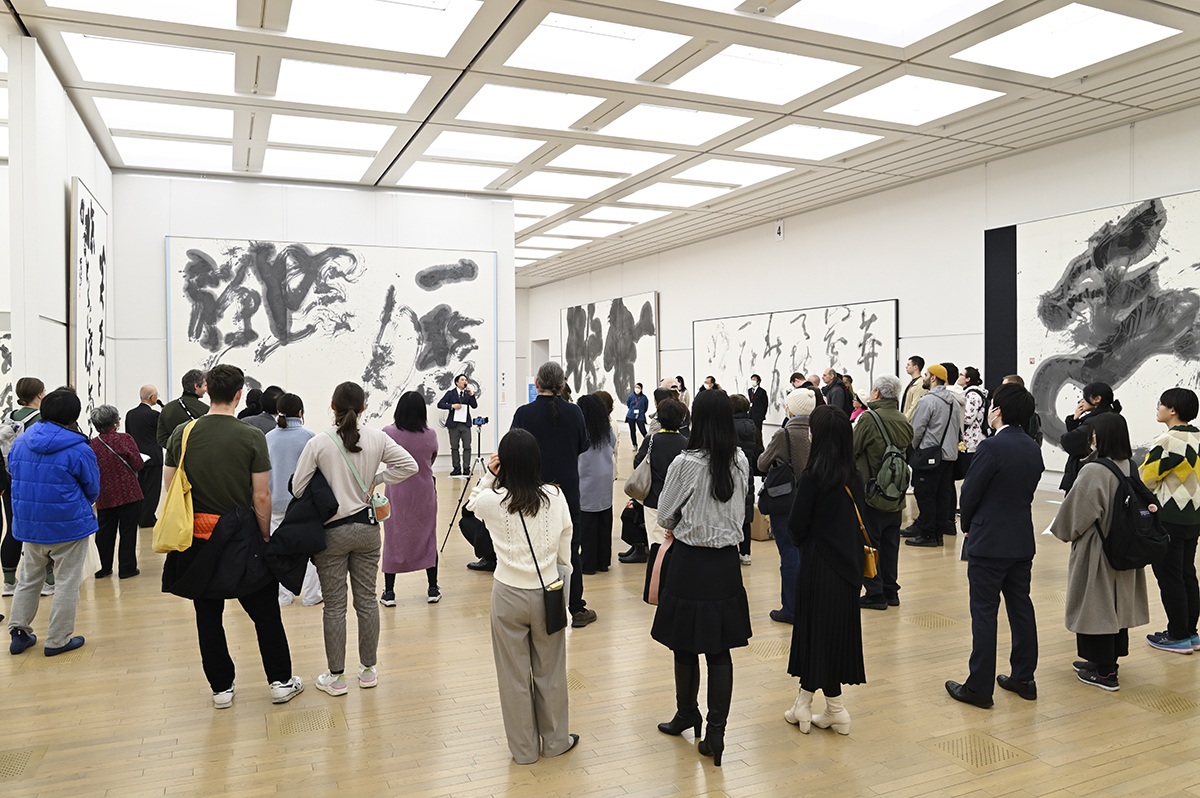
Moving to another area of the exhibition that featured smaller pieces, Dokuritsu Shojindan Standing Director Hoseki Sawae, who had one of his own works on display, took a different approach with his talk by inviting participants to select specific works and say what caught their eye. Using that as a launching point, he went on to explain calligraphic techniques and offer his own evaluations of the selected works.
In particular, drawing on an observation made by one of the attendees, Sawae pointed out how the weight and thickness of the brush strokes — regardless of how much ink is used — can convey feeling and passion to the observer.
Picking up on this, Dokuritsu Shojindan Board Director Kanamaru Tenpo emphasized that good works reveal the emotional landscape in a calligrapher’s heart in the moment they are executed. Echoing this, Matsuo observed that, perhaps reflecting such stress factors from the past year as natural disasters at home and wars abroad, many of the calligraphers seemed to have chosen passages and words that showed their hopes for a brighter future.
The exhibition also offered a workshop to give participants their own opportunity to pick up brushes and put ink to paper. Some two dozen foreign and Japanese visitors made the attempt, receiving guidance from foundation members.
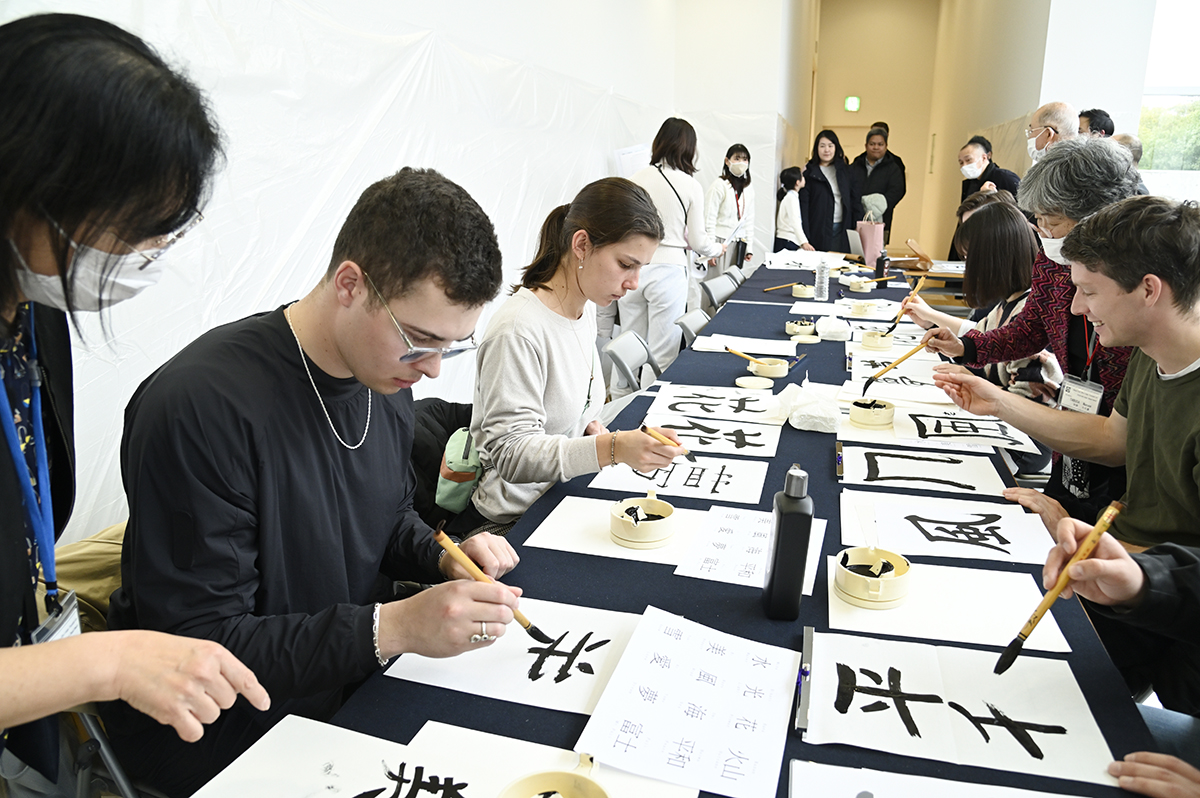
As a martial arts aficionado, Hinek Gonzalez — a Cuban resident of France in Japan on a business trip — was happy to get the firsthand learning experience.
“I have seen Japanese calligraphy for many years because I am a karate practitioner, but I have never tried myself because I thought it looked too difficult. It’s less difficult than I thought, but I think you must invest a lot of years to really approach matching the expectations of Japanese calligraphers,” he said.
Julien Chelles, a French artist just beginning a yearlong working holiday in Japan, had visited the exhibition a few days before.
“It made me want to try calligraphy myself. It seems strongly like this is very close to abstract painting when you observe the drawings, and the way that the ink is put to the paper. It was interesting to learn how the calligraphers went about their work. I’m seeing it only in abstract terms because I don’t read Japanese, but there is a deeper meaning there.”



